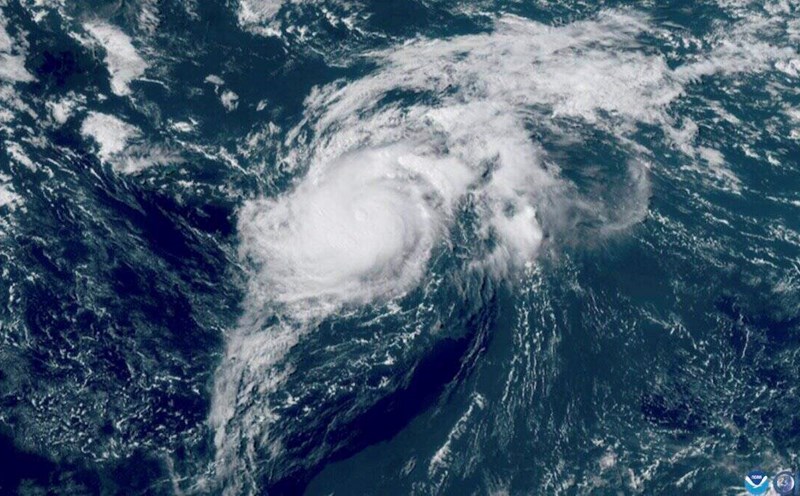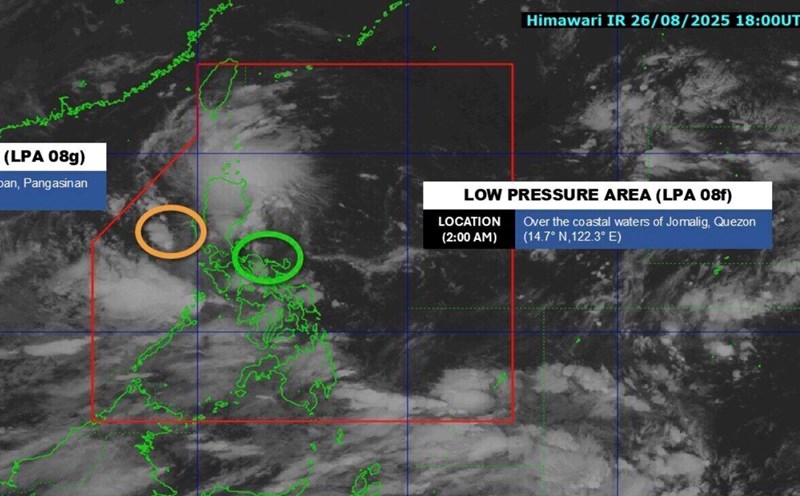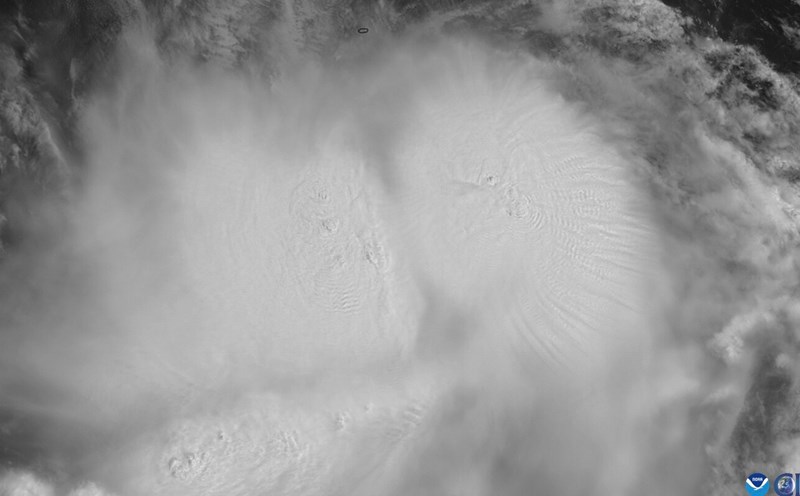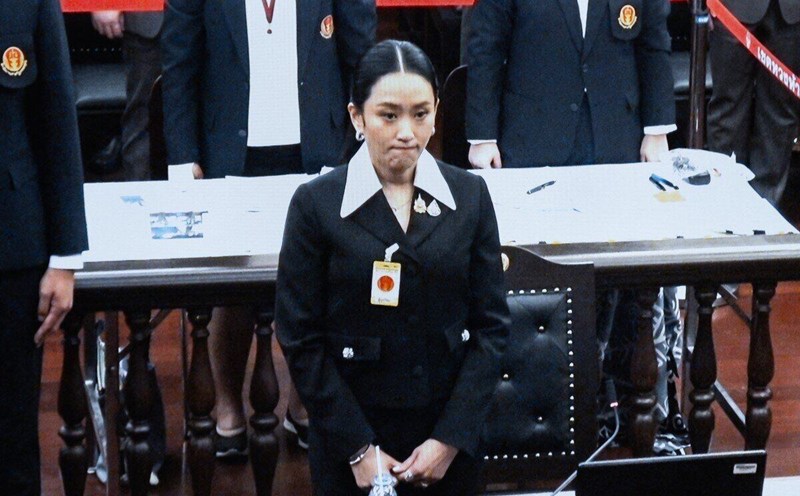The latest storm and low pressure forecast on August 27 from the Philippine Atmospheric, Geophysical and Astronomical Services Administration (PAGASA) said that it is expected that during the week from August 27 to September 2, there will be 2 low pressure areas appearing in the PAGASA PMD forecast area. These two depressions include one low pressure near the East Sea and one low pressure over the East Sea.
The low pressure near the East Sea is forecast to appear first in PAGASA's TCAD forecast area. This low pressure is unlikely to strengthen into a storm and is likely to enter the northeastern area of the Philippine Forecast Area (PAR).
The low pressure forecast in the East Sea is also expected to form during the forecast period, in the eastern area of the East Sea. This low pressure is likely to strengthen into a storm or tropical depression higher than the low pressure near the East Sea.
The low pressure in the East Sea is forecast to have a wide area of influence and continue to move westward during the week from September 3 to September 9. This low pressure is forecast to head towards Hainan Island (China) and Vietnam.
During this forecast period, a third low pressure is expected to form in the northern part of the Philippine Sea, with little chance of strengthening into a storm.
Philippine forecasters say the low pressure area that will form during the week of September 3 to September 9 will head towards Taiwan (China).
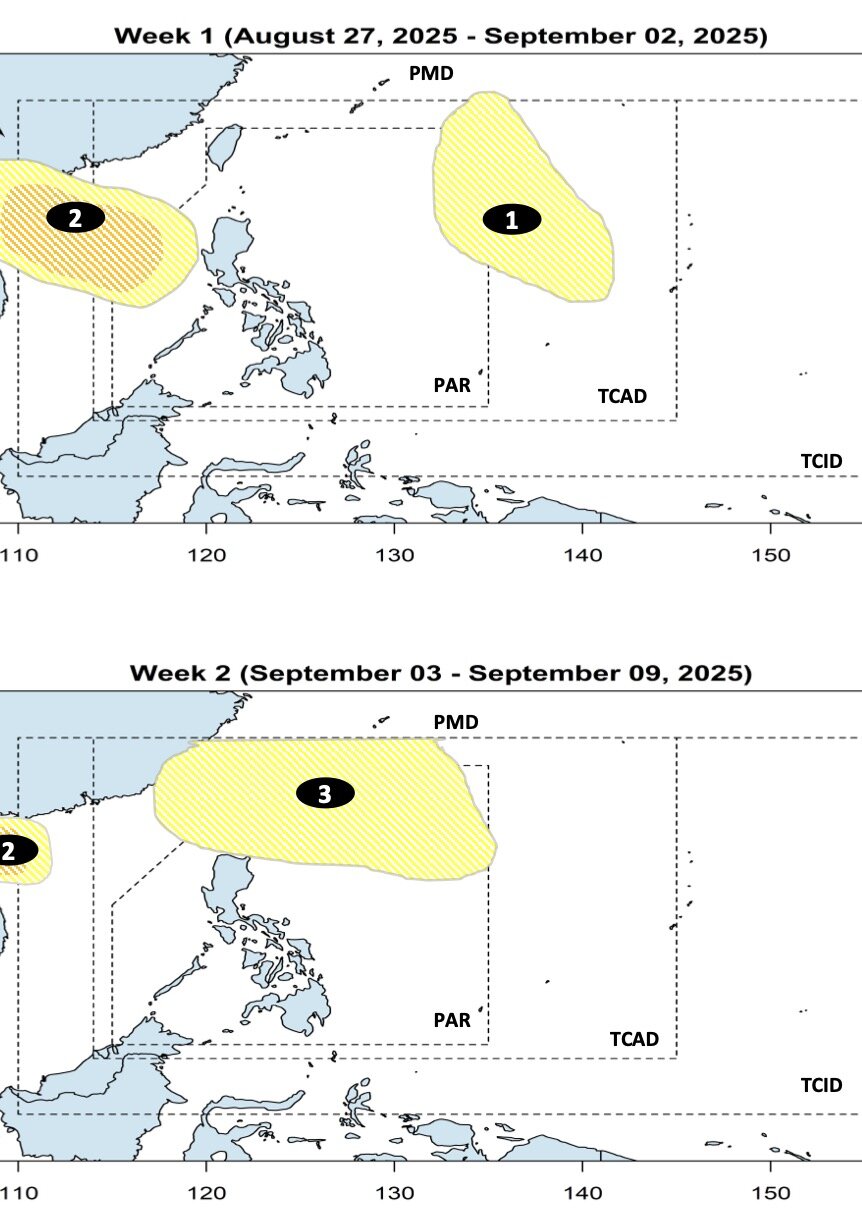
According to the latest forecast from Philippine weather forecasters, there is a possibility of 2-4 low pressure areas forming or entering the Philippine forecast area in September. The next typhoon names for the 2025 typhoon season in the Philippines include: Jacinto, Kiko, Lannie and Mirasol.
According to PAGASA expert Ryan Diocampo, based on climate data, storms or tropical depressions in September usually have 4 common directions.
Some systems are moving northeast of the PAR toward Japan or South Korea. These systems do not make landfall in the Philippines and are less likely to affect the southwest monsoon (habagat).
The second path of the storm, the September tropical depression, is the northwest ring of the PAR, towards Taiwan (China), thereby enhancing the activity of the southwest monsoon.
Third, storms and tropical depressions make landfall north or northernmost of Luzon, Philippines before moving towards Hong Kong (China) or mainland China.
Finally, some storms or tropical depressions make landfall south of Luzon before continuing to enter the East Sea, heading towards Vietnam.

